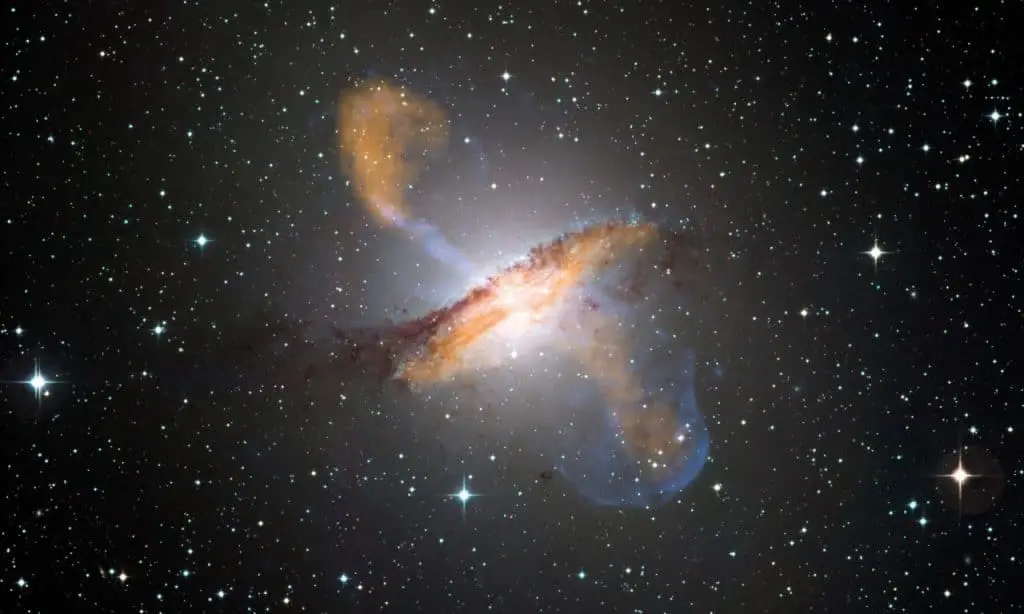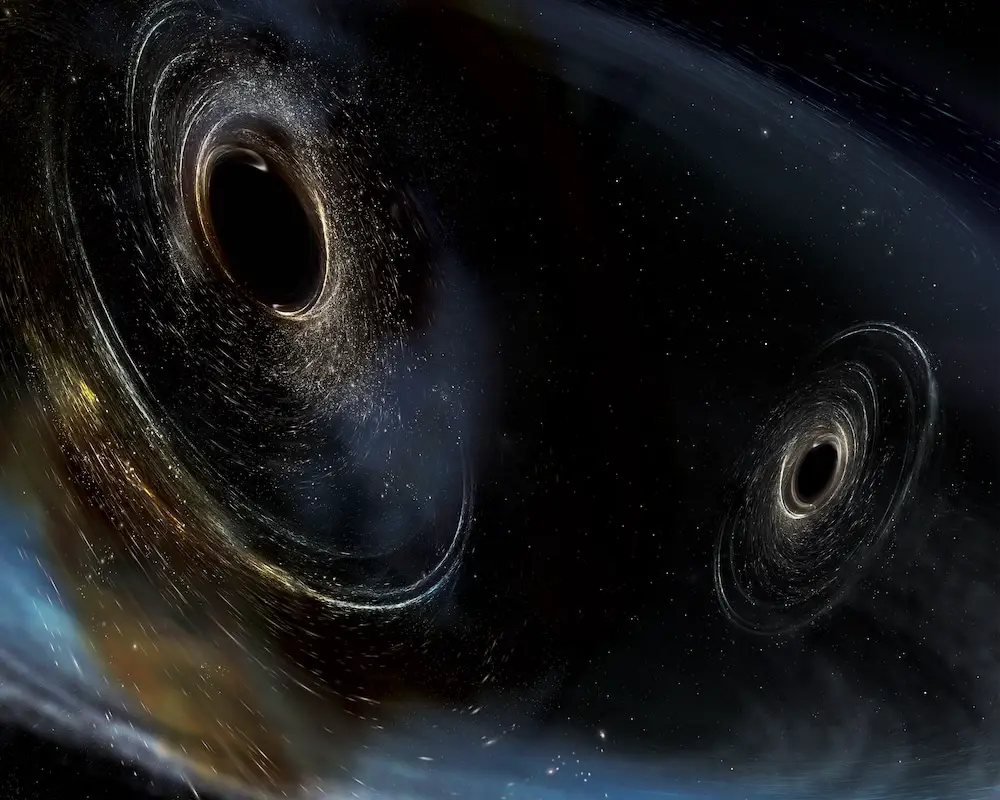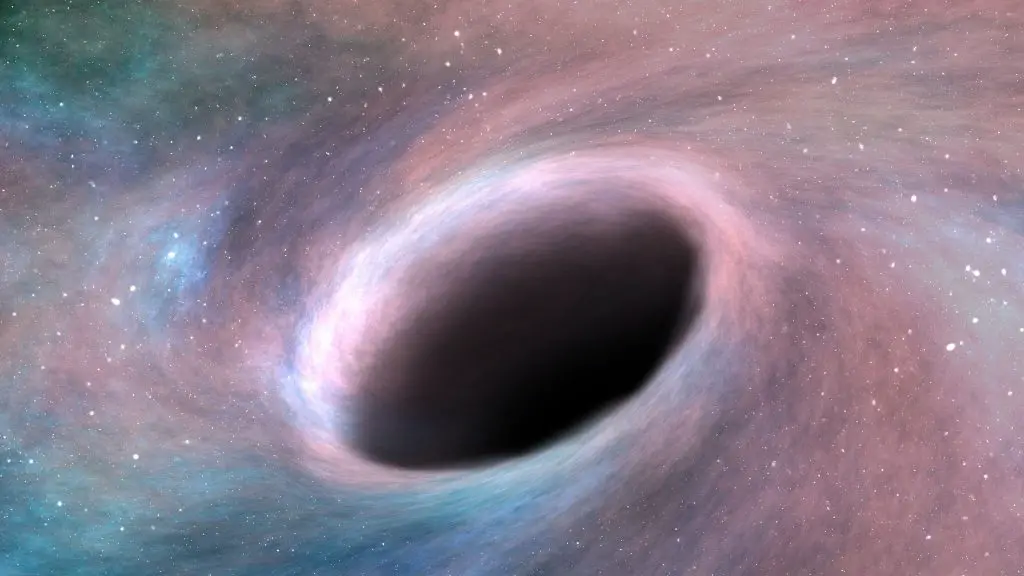Missing black holes would be unusual. Predicted as a result of Einstein’s general theory of relativity, they contain an outer region known as the event horizon, from which nothing, not even light, can escape. Beyond that, they are predicted to have an infinitely dense point where our understanding of physics breaks down and nothing makes sense anymore.
What do we know about black holes?
That’s before we even get into the black hole information paradox. If a black hole has mass (and it has a lot of it), then it should have a temperature according to the first law of thermodynamics and, in line with the second law of thermodynamics, it should radiate heat. Stephen Hawking demonstrated that black holes should emit radiation – now called Hawking radiation – formed at the boundary of a black hole.
“Hawking then highlighted a paradox: if a black hole can evaporate, some of the information it contains will be lost forever,” explains French astrophysicist Jean-Pierre Luminet in a 2016 article.
“The information contained in the thermal radiation emitted by a black hole is degraded; it does not summarize the information about the matter previously engulfed by the black hole. The irreparable loss of information conflicts with one of the fundamental postulates of quantum mechanics. According to the Schrödinger equation, physical systems that change over time cannot create or destroy information, a property known as unitarity.”
I mean, we’re probably missing something. Physicists and mathematicians have tried to come up with ideas that would eliminate these problems and have obtained rather strange results. Some have even suggested that the universe might be holographic, and that the universe we know and love is actually the result of interactions at the infinitely distant edge. We told you black holes are weird.
Yet, we have certainly observed objects that appear to have the properties of black holes, including (but far from limited to) the M87* black hole image. But what if black holes didn’t exist at all?

One idea is that black holes are actually “gravastars,” a combination of gravity, vacuum and stars. First proposed in 2002 by Pawel O. Mazur and Emil Mottola, the idea is that at some point during the collapse of a large star, intense gravity transforms its matter into a new state similar to the Bose condensate. Einstein (BEC).
BEC occurs when atoms are cooled to such low energy states that they begin to behave like a single “super atom.” In gravastars, the team suggested that when the star collapses to the point of the event horizon, its matter transforms into a new state, which exerts outward pressure and prevents the star from collapsing into a singularity that defies physics.
In gravastars, this highly warped (but familiar) spacetime is surrounded by an ultrathin, ultracold, ultra-dark, and virtually indestructible shell.
Because this new form of matter is very resistant, yet somewhat flexible, like a bubble, anything trapped by its intense gravity and crashing into it would be obliterated and then assimilated into the Gravastar shell,” Mottola said in a Note . after the first article on gravastars.
One of the main advantages of gravastars is the elimination of messy event horizons and singularities. But while interesting as an idea, they must also explain what we observe, and we have certainly observed objects that resemble black holes.
“This shadow is not caused by the trapping of light in the event horizon, but by a slightly different phenomenon called ‘gravitational redshift,’ which causes light to lose energy when moving through a region with a strong gravitational field.” , João Luís Rosa, professor of physics at the University of Gdańsk in Poland and author of a new study on gravastars.

“In fact, when the light emitted from regions close to these alternative objects reaches our telescopes, most of its energy would be lost in the gravitational field, causing the appearance of this shadow.”
As with black holes, things get more complicated when you add rotation, and there are (disputed) suggestions that gravastars are not stable as they rotate. And they’re also a little weird (hey, we’re talking in-universe about this). It is hypothesized that the interior of gravastars may contain a series of thicker shells, known as nestars.
They are not perfect and there is a lot of work to be done to model how they work. It is also possible that both black holes and gravastars exist. One big problem is that it’s difficult to distinguish between the two, although some models suggest they should emit very different gravitational radiation, letting us know whether we’re looking at gravastars or traditional black holes, and all the headaches that entails.
The study by Rosa and colleagues was published in Physical Review D.
What are black holes?
THE black holes they are some of the strangest and most fascinating objects in space. They are extremely dense, with a gravitational pull so strong that not even light can escape their grasp.
The Milky Way may contain over 100 million black holes, although spotting these greedy beasts is very difficult. At the heart of the Milky Way lies a supermassive black hole: Sagittarius A*. According to a NASA statement, the colossal structure is about 4 million times the mass of the Sun and is located about 26,000 light-years from Earth.
The first image of a black hole was captured in 2019 by the Event Horizon Telescope (EHT) collaboration. The astonishing photo of the black hole at the center of the M87 galaxy, 55 million light-years from Earth, has thrilled scientists around the world.
Black holes are predicted to form through two distinct channels. According to the first path, they are stellar corpses, so they are formed when massive stars die. Stars whose mass at birth is greater than about 8-10 times the mass of our Sun, when they exhaust all their fuel – hydrogen – explode and die, leaving behind a very compact, dense object, a black hole. The resulting black hole that is left behind is called a stellar-mass black hole, and its mass is on the order of a few times the mass of the sun.

Not all stars leave black holes, stars with lower masses at birth leave behind a neutron star or a white dwarf. Another way black holes form is by direct collapse of gas, a process that should give rise to more massive black holes, with a mass ranging from 1,000 times the mass of the Sun up to 100,000 times the mass of the Sun. This channel evades traditional star formation and is believed to operate in the early universe and produce seeds of more massive black holes.
Black holes were predicted as an exact mathematical solution to Einstein’s equations. Einstein’s equations describe the shape of space around matter. The theory of general relativity links the geometry or shape of shape to the detailed distribution of matter.
The black hole solution was found by Karl Schwarzschild in 1915, and it was discovered that these regions – black holes – distort space extremely and generate a puncture in the fabric of spacetime. It was unclear at the time whether these corresponded to real objects in the universe. Over time, as other end products of stellar death were detected, namely neutron stars seen as pulsars, it became clear that black holes were real and should exist. The first black hole detected was Cygnus-X1.
Black holes do not die per se, but are theoretically predicted to eventually slowly evaporate over extremely long time scales.
Black holes grow thanks to the accumulation of nearby matter, attracted by their immense gravity. Hawking predicted that black holes could also radiate energy and shrink very slowly. Quantum theory suggests that there are virtual particles that continually pop in and out of existence.

When this happens, a particle and its companion antiparticle appear. However, they can also recombine and disappear again. When this process happens near the event horizon of a black hole, strange things can happen. Instead of the particle-antiparticle pair existing for a moment and then annihilating each other, one of them can fall under gravity and fall into the black hole, while the other particle can fly away into space.
On very long time scales, we’re talking time scales much longer than the age of our universe, the theory goes that this trickle of escaping particles will slowly evaporate the black hole.
No black hole is not a wormhole. Wormholes can be thought of as tunnels that connect two separate points in space and time. It is believed that the interior of black holes may contain a wormhole, the perforation of spacetime, which could offer a portal to another point in spacetime, potentially even in a different universe.
According to the Space Telescope Science Institute (STScI), about one star in a thousand is massive enough to become a black hole. Since the Milky Way contains over 100 billion statistics, our galaxy must host approximately 100 million black holes.
Although detecting black holes is a difficult task and NASA estimates suggest that there could be 10 million to a billion stellar black holes in the Milky Way.

The closest black hole to Earth is nicknamed “ The Unicorn ” and is located about 1,500 light-years away. The nickname has a double meaning. Not only does the black hole candidate reside in the constellation Unicorn (“the Unicorn”), but its incredibly low mass – about three times that of the sun – makes it almost one-of-a-kind.
Black holes have three “layers”: the outer and inner event horizons and the singularity.
The event horizon of a black hole is the boundary around the mouth of the black hole, beyond which light cannot escape. Once a particle crosses the event horizon, it cannot leave. Gravity is constant across the event horizon.
The internal region of a black hole, where the object’s mass is located, is known as its singularity, the single point in spacetime where the black hole’s mass is concentrated.
Scientists cannot see black holes the same way they see stars and other objects in space. Instead, astronomers must rely on detecting radiation emitted by black holes as dust and gas are pulled into the dense creatures. But supermassive black holes, which sit at the center of a galaxy, may be shrouded in the thick dust and gas around them, which can block telltale emissions.
#black #holes #didnt #exist